An innovation developed at RMIT University has been used for the first time in a major infrastructure project, being laid into a footpath along a busy road in Pakenham as part of Victoria's Big Build.
Major Road Projects Victoria (MRPV) and project contractor BildGroup have used concrete mixed with biochar made from spent coffee grounds, as a replacement of a portion of the river sand that is normally used, in the Pakenham Roads Upgrade.
Organic waste going to landfill, including spent coffee grounds, contributes 3% of greenhouse gas emissions. This waste cannot be added directly to concrete because it would decompose over time and weaken the building material, which is why the used coffee is converted into biochar before being added to the concrete mix.
Australia generates 75 million kilograms of ground coffee waste every year - most of it goes to landfills, but it could replace up to 655 million kilograms of sand in concrete because it is a denser material. Globally, 10 billion kilograms of spent coffee is generated annually, which could replace up to 90 billion kilograms of sand in concrete.
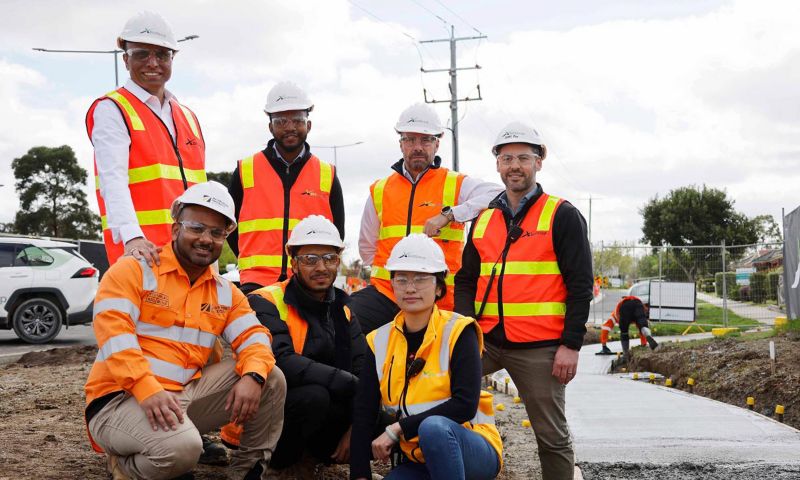
Dr Rajeev Roychand (back left) with BildGroup employees who are RMIT alumni including the CEO Stephen Hill (second from right, at the back) at the site of the Pakenham Roads Upgrade. Credit: Pete Glenane, HiVis Pictures
For this project, Earth Systems converted 5 tonnes of spent coffee grounds - about 140,000 coffees worth of grounds - into 2 tonnes of useable biochar, which has been laid into the 30 metres cubed footpath along McGregor Road in Pakenham.
The use of coffee biochar is one of several circular economy initiatives delivered for the Pakenham Roads Upgrade that include reusing the in-fill soil and material for the Princes Freeway embankments and using foam bitumen and rubber tyre road barriers.
MRPV Program Director Brendan Pauwels said coffee concrete had the potential to cut costs and remove vast amounts of waste material from landfill.
"These numbers are remarkable in terms of ecological benefit, and we're excited to see the Pakenham Roads Upgrade be the first Victorian Big Build project to use the coffee concrete," he said.
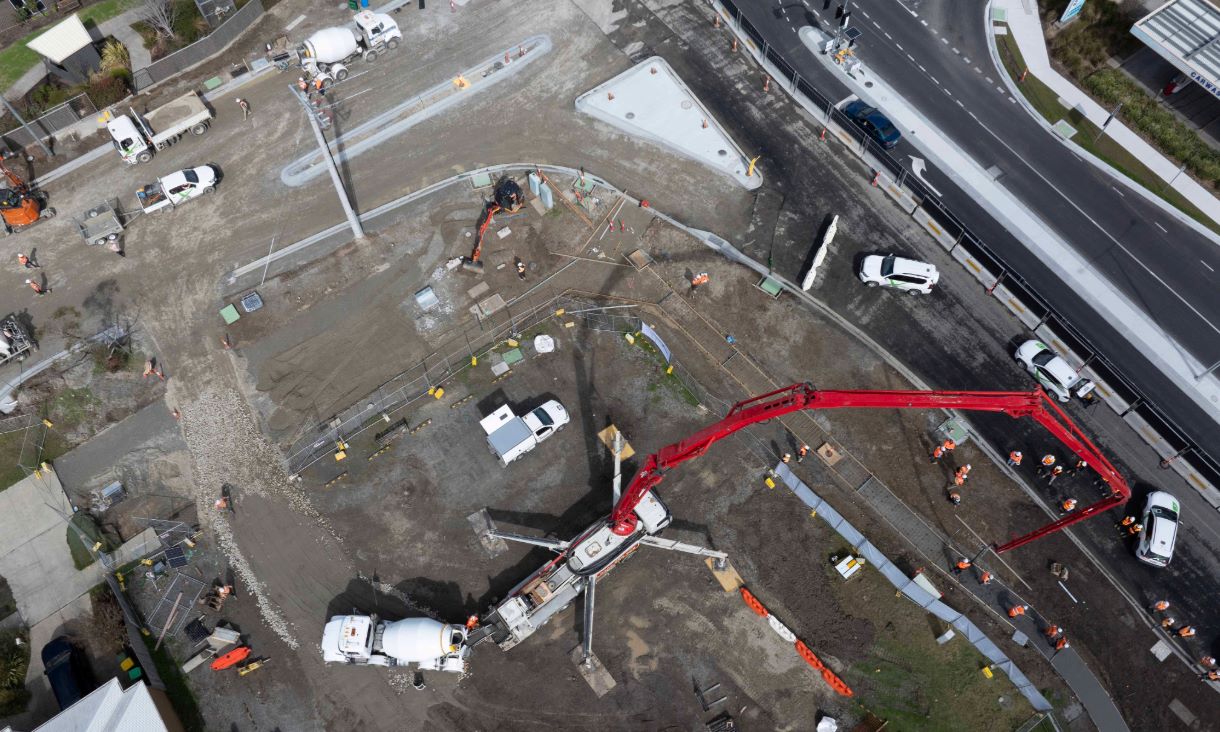
Bird's eye view of the coffee concrete footpath being laid along a busy road in Pakenham. Credit: HiVis Pictures
RMIT Postdoctoral Research Fellow Dr Rajeev Roychand, the lead inventor of the coffee concrete, was excited to partner with BildGroup and MRPV for the translation of the RMIT team's research into Victorian government's Big Build projects.
"This proactive support plays a significant role in creating a potential for diverting all forms of biodegradable organic waste, which is currently ending up in landfills and contributing to 3% of Australia's greenhouse gas emissions," Roychand said.
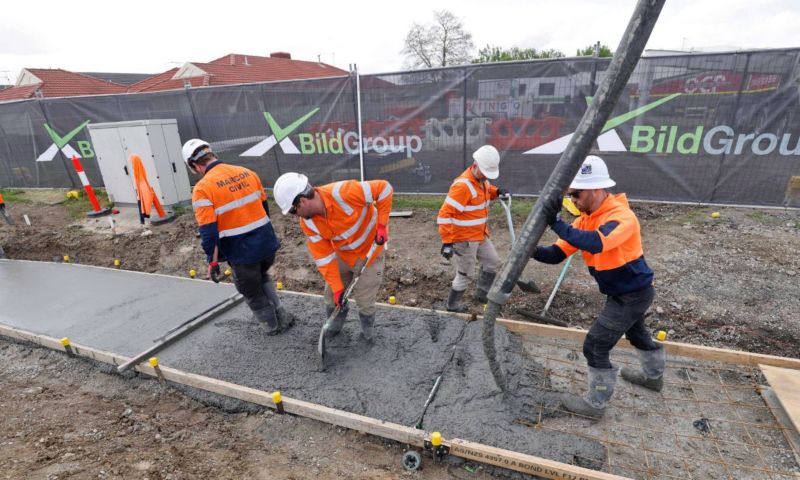
Workers laying coffee concrete in a new footpath along McGregor Road in Pakenham. Credit: Pete Glenane, HiVis Pictures
BildGroup CEO Stephen Hill, an RMIT alumnus, said he was happy for the company to lead the way and be the first to bring coffee concrete to a major infrastructure project for the Australian construction industry.
"With the coffee concrete we've poured, we're diverting an estimated 140,000 coffees from landfill and saving over 3 tonnes of sand, which have enormous environmental benefits," he said.
"From a triple bottom line perspective, this just makes good business sense."
Earlier this year, RMIT teamed up with Macedon Ranges Shire Council to conduct a successful world-first trial of coffee concrete in a footpath in Gisborne, Victoria.
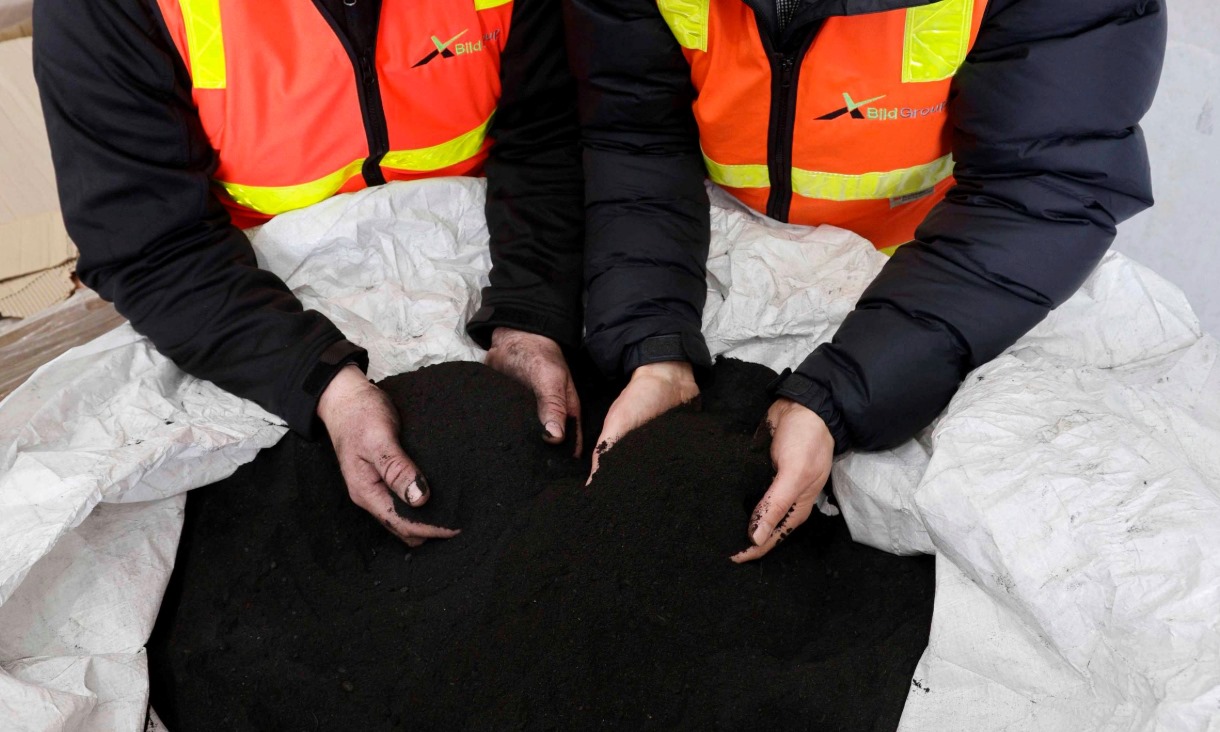
Coffee biochar. Credit: Pete Glenane, HiVis Pictures
The original research and next steps
The RMIT team developed a technique to make concrete 30% stronger by turning waste coffee grounds into biochar, using a low-energy process without oxygen at 350 degrees Celsius.
Due to current supply chain limitations, the team couldn't use their low-energy process to produce biochar, so the coffee concrete used in the Gisborne trial had a similar strength to standard concrete.
To translate the team's innovation into a commercial reality, RMIT is engaging with a commercialisation partner and also with companies in the construction and agriculture sectors that would potentially benefit from using biochar products.
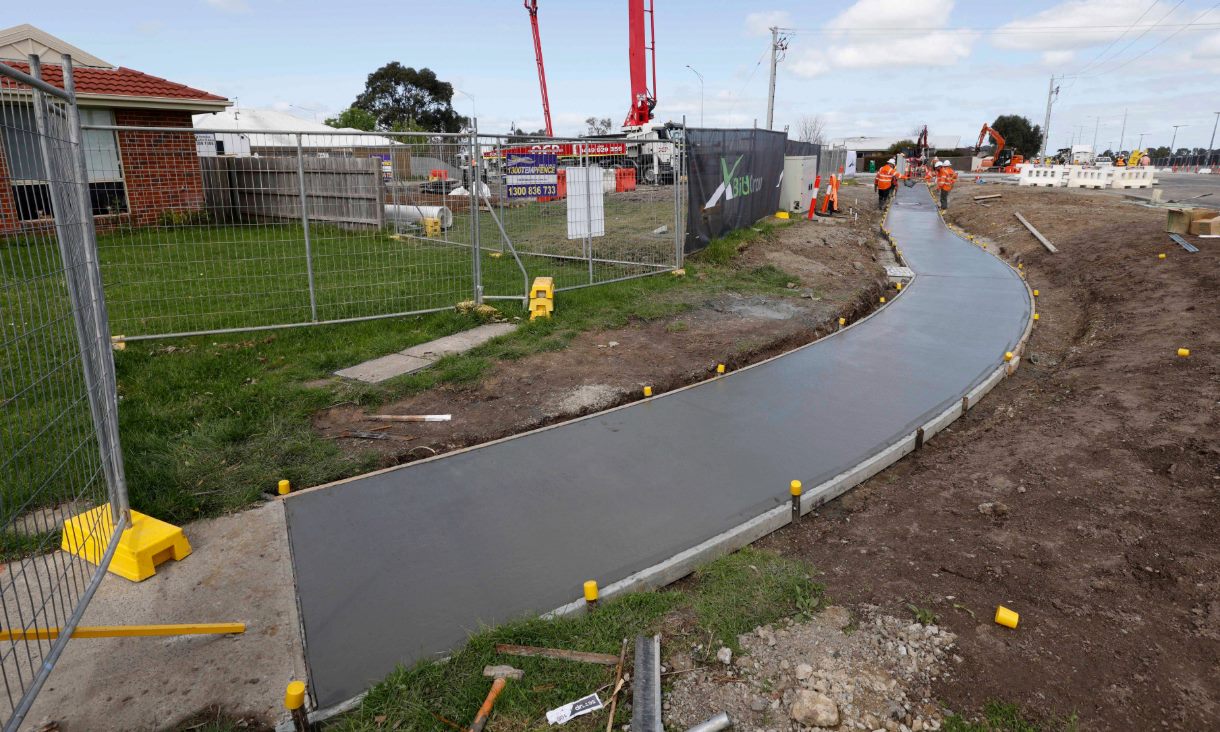
Coffee concrete footpath being laid along a busy road in Pakenham. Credit: Pete Glenane, HiVis Pictures
The RMIT researchers acknowledge the support from ARUP Australia Pty Ltd, Earth Systems Pty Ltd and RMIT University, including the Strategic Capability Deployment Fund, Rheology and Materials Characterisation Laboratory, the X-Ray Facility and the Microscopy and Microanalysis Facility.
The researchers also acknowledge the Indigenous-owned coffee supplier Talwali Coffee Roasters for providing used ground coffee for the research.
'Transforming spent coffee grounds into a valuable resource for the enhancement of concrete strength' is published in the Journal of Cleaner Production. (DOI: 10.1016/j.jclepro.2023.138205).
RMIT co-authors are Dr Rajeev Roychand, Dr Shannon Kilmartin-Lynch, Dr Mohammad Saberian, Professor Jie Li, Professor Guomin (Kevin) Zhang and Professor Chun-Qing Li.






